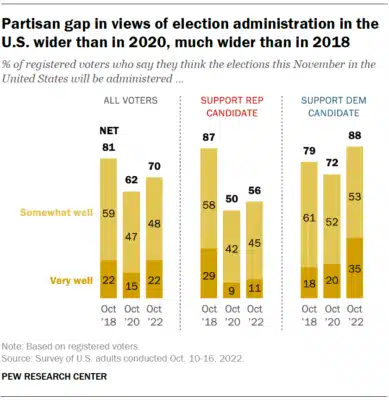By Gennifer Harding-Gosnell
Eighty million Americans sat out the last presidential election in 2020. Of those who did vote, 85 million of them were registered to one of the two major political parties. But if non-voters were their own political party, they would nearly equal the numbers of Republicans and Democrats combined.
Throughout the summer, The Cleveland Observer spoke with non-voters for our article series, “None Of The Above,” to find out why so many Clevelanders choose to avoid participating in the political process. About half of the respondents told us they are registered but don’t actually go to vote. Mari, from Wade Park, 19 years old now, said she registered at 18 through her high school. Another few respondents were approached by voting advocates throughout the city who encouraged them to sign up.
Cleveland Votes, a local voter-engagement organization, was able to register over 3,000 people countywide on last year’s National Voter Registration Day. But of the 878,590 registered voters in the county, only 404,940 cast ballots in the 2022 midterm election, repeatedly referred to as having the potential to be the end of democracy. Some precincts in the near east and west sides of Cleveland saw lower than 14% turnout. One neighborhood precinct had a roll of 666 registered voters—only 88 cast ballots.
The most commonly heard phrase from respondents, both registered and not, was “your vote doesn’t matter,” and they think others in their communities don’t vote for similar reasons. “They feel it won’t do any good,” said Jazzi, 53, living downtown. “Things won’t change, the rich or well-off get richer, and the low-income live from paycheck to paycheck.”
“We gotta go in these long lines in specific areas to vote,” said Kamielya Prosser, 30, of Shaker Square,“ and that takes time out of our day, or a day off that we can’t afford to miss because we gotta pay the bills we already have.” Several also mentioned a lack of good-quality candidates and a lack of general interest in politically-related subjects as reasons for not voting. ‘Nonvoter #1776’ told TCO he “does not want to be held accountable for the actions of bad candidates, and there’s always a lack of candidates that align with my values running in elections anyway.” Miyah, 23, from Euclid, said simply, “It’s boring.”
Though the issue of what is or isn’t a high-quality candidate is subjective, rank-choice voting offers a reprieve from choosing between the “lesser of two evils” and allows voters to choose multiple candidates in order from their most preferred candidate down, opening up the field for lesser-known candidates, many of whom may not even be affiliated with Republicans or Democrats. Rank-choice voting has already been successfully implemented in cities and states throughout the US, though it is not without its detractors.
Involving residents in government decision-making and adding opportunities for community oversight also helps non-voters gain the trust of the political process. Michigan increased its voter turnout by passing ballot initiatives in 2018 that made voting less complicated, including creating independent citizen oversight of the redrawing of district maps to prevent gerrymandering.
As politicians and voting advocates continue to look for creative ways to engage the interest of non-voters, like watch parties and trivia nights, the most successful voter engagement according to those who need it is when residents can see changes within their communities and feel they have a stake and start to take interest in political matters.
When our respondents were asked what they would need to see or experience to change their minds about voting, the answers varied from “change the whole government, the whole thing is not working” to “impose limits on what rich people can donate.” “I need to know our voices actually matter,” said Prosser. “Politicians need to speak to us like real people. I want to see that we’re voting for things that actually help us and everybody is heard.”





